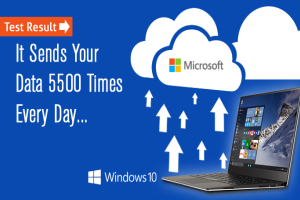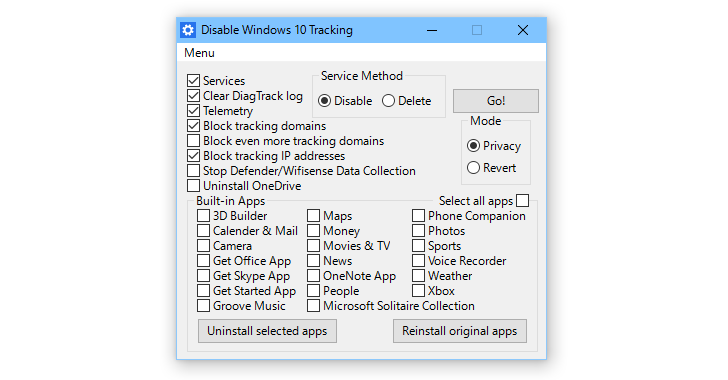When it comes to Windows 10 privacy, don't trust amateur analysts
Myth: By disabling all privacy compromising and telemetry features on Windows 10 will stop Microsoft to track your activities.
 Fact: Even after all telemetry features disabled, Windows 10 is phoning home more than you could ever think of. Ever since the launch of Microsoft's newest operating system, Windows 10 is believed to be spying on its users. I wrote a number of articles to raise concern about Windows 10 privacy issues, including its controversial data mining features and privacy invasion features.
Fact: Even after all telemetry features disabled, Windows 10 is phoning home more than you could ever think of. Ever since the launch of Microsoft's newest operating system, Windows 10 is believed to be spying on its users. I wrote a number of articles to raise concern about Windows 10 privacy issues, including its controversial data mining features and privacy invasion features.
The only solution believed to cope up with these issues is to disable all the telemetry features or use an automated tool to disable all privacy-infringing features in just one click. But unfortunately, all these efforts got wasted because Microsoft still tracks you, even after you tighten your Windows 10 privacy to an extreme level, claims the recent analysis conducted by a Voat user CheesusCrust.
Traffic Analysis Reveals Extent of Windows 10 Spying
Curious to know the extent of Windows 10 spying, CheesusCrust set up his Linux laptop with a Windows 10 Enterprise virtual machine as well as a DD-WRT router that was being utilized to monitor traffic. CheesusCrust also disabled every single tracking and telemetry features in the operating system. He then left the machine running Windows 10 overnight in an effort to monitor the connections the OS is attempting to make.
The results are not so surprising:
Eight hours later, he found that the idle Windows 10 box had tried over 5,500 connections to 93 different IP addresses, out of which almost 4,000 were made to 51 different IP addresses belonging to Microsoft. After leaving the machine for 30 hours, Windows 10 expanded that connection to 113 non-private IP addresses, potentially allowing hackers to intercept this data.

Taking his test to a step further, CheesusCrust again installed Windows 10 Enterprise virtual machine on his laptop, disabled all tracking features and enabled a third-party tool known as DisableWinTracking. After this, the number was reduced to 2758 connections to 30 different IP addresses in the period of 30 hours. The interesting fact here is: This analysis was conducted on Windows 10 Enterprise Edition that comes with the most granular level of user control, far more than the standard Windows 10 Home Edition used by a sizable audience.
The Greatest Cost to Owning 'Free' Windows 10
However, based on these logs, it would be inaccurate to say that Windows 10 is sending your personal data to Microsoft's servers. But, thousands of connection attempts in the period of 8 hours just to check for updates or adjust the time, sounds more complicated than thought. A September 2015 blog from Terry Myerson, head of the Windows team, explained that while Windows 10 does send some of your data to the company, everything is encrypted and doesn't include any of your personal details.
Here's what Microsoft says about the Windows 10 Spying concerns: "We collect a limited amount of information to help us provide a secure and reliable experience. This includes data like an anonymous device ID, device type, and application crash data which Microsoft and our developer partners use to continuously improve application reliability. This doesn't include any of your content or files, and we take several steps to avoid collecting any information that directly identifies you, such as your name, email address or account ID."
While this research doesn't provide what details Windows 10 is sending to the company even after disabling the telemetry features, you have to keep this in mind that Nothing comes for FREE. "Free" is just a relative term. May be you are paying the greatest cost to owning Windows 10.
Axarhöfði 14,
110 Reykjavik, Iceland














